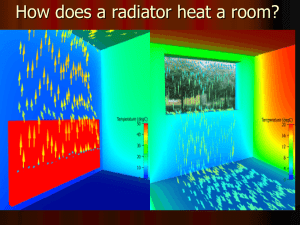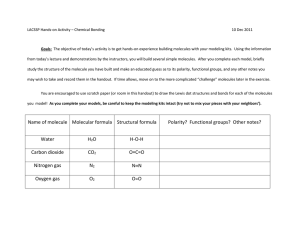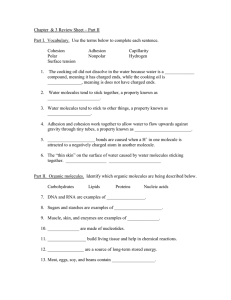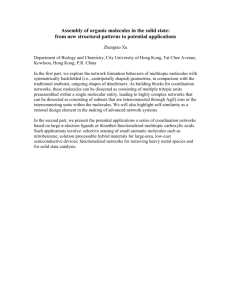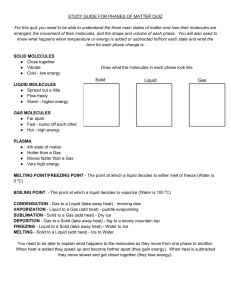Bill Nye Heat Video Worksheet: Science Education
advertisement
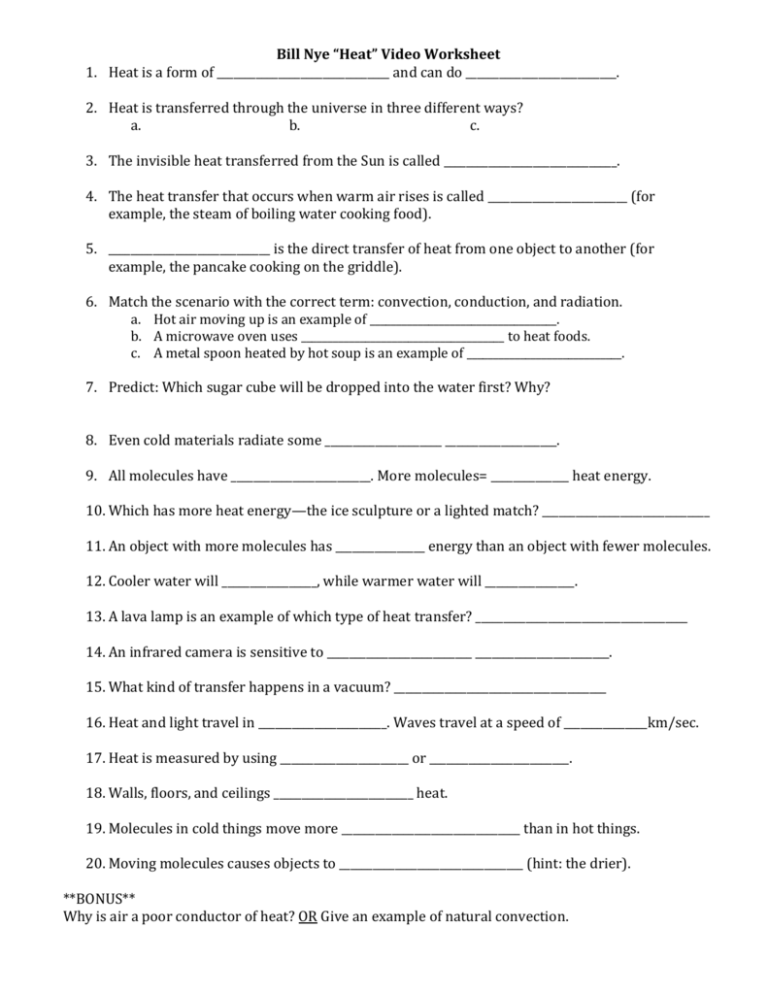
Bill Nye “Heat” Video Worksheet 1. Heat is a form of _______________________________ and can do ___________________________. 2. Heat is transferred through the universe in three different ways? a. b. c. 3. The invisible heat transferred from the Sun is called _______________________________. 4. The heat transfer that occurs when warm air rises is called _________________________ (for example, the steam of boiling water cooking food). 5. _____________________________ is the direct transfer of heat from one object to another (for example, the pancake cooking on the griddle). 6. Match the scenario with the correct term: convection, conduction, and radiation. a. Hot air moving up is an example of ___________________________________. b. A microwave oven uses ______________________________________ to heat foods. c. A metal spoon heated by hot soup is an example of _____________________________. 7. Predict: Which sugar cube will be dropped into the water first? Why? 8. Even cold materials radiate some _____________________ ____________________. 9. All molecules have _________________________. More molecules= ______________ heat energy. 10. Which has more heat energy—the ice sculpture or a lighted match? ______________________________ 11. An object with more molecules has ________________ energy than an object with fewer molecules. 12. Cooler water will _________________, while warmer water will ________________. 13. A lava lamp is an example of which type of heat transfer? ______________________________________ 14. An infrared camera is sensitive to __________________________ ________________________. 15. What kind of transfer happens in a vacuum? ______________________________________ 16. Heat and light travel in _______________________. Waves travel at a speed of _______________km/sec. 17. Heat is measured by using _______________________ or _________________________. 18. Walls, floors, and ceilings _________________________ heat. 19. Molecules in cold things move more ________________________________ than in hot things. 20. Moving molecules causes objects to _________________________________ (hint: the drier). **BONUS** Why is air a poor conductor of heat? OR Give an example of natural convection.
